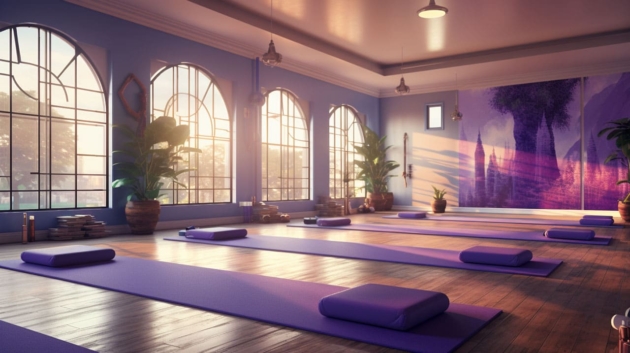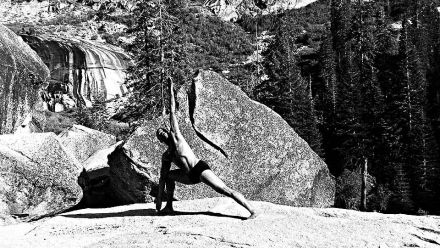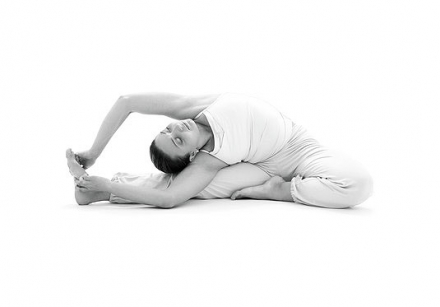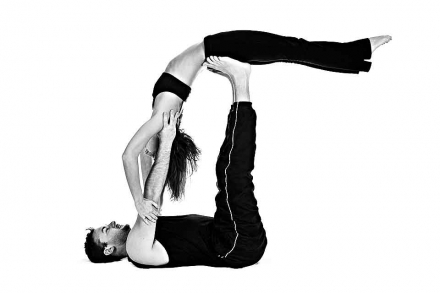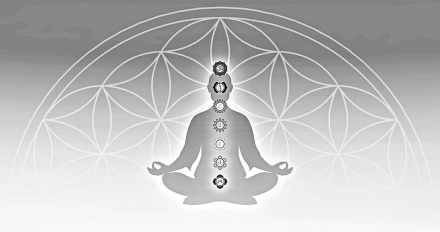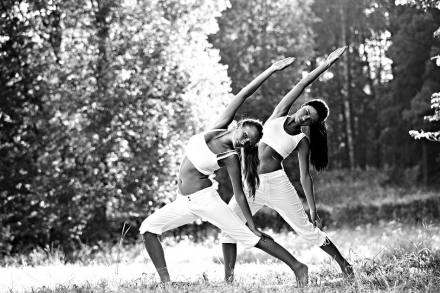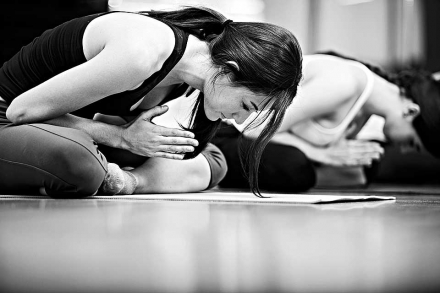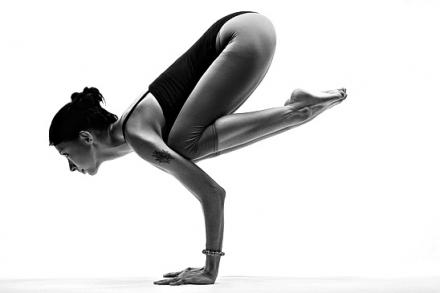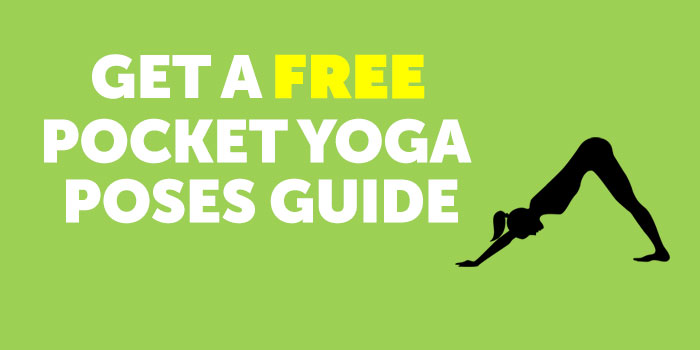So, you’ve decided to take up yoga for flexibility? Bravo! Let me tell you, you’re about to embark on a journey that will make your body say, “Hey, I didn’t know I could do that!” Yoga is a fantastic way to improve flexibility, and trust me, you won’t need to twist yourself into a pretzel on day one. But don’t worry, with time, patience, and a dash of humor, you’ll soon be more flexible than a rubber band in a heatwave. Remember, in the world of yoga, progress is measured in millimeters, not miles. So, let’s get you on a flexible yoga path that’s as smooth as your grandma’s famous mashed potatoes.
Now, let’s talk safety. We all know those super bendy folks who can touch their toes without even blinking. But let’s face it, we’re not all there yet. And that’s okay! The key here is to improve flexibility safely and gradually. No one’s winning any medals for the fastest hamstring stretch, folks. Let’s leave the rush for the morning commute, shall we?
Understand the Benefits of Flexibility
Let’s delve deeper to understand the benefits of flexibility. First, we’ll look at how it improves body function, making daily tasks easier. Next, we’ll explore how flexibility reduces risk of injury by strengthening our muscles. We’ll then discuss the increased range of motion and how it enhances our physical performance. We’ll also explore the long-term benefits of flexibility for a healthier life. Finally, we’ll tie this all with flexibility and yoga practices, highlighting how yoga can aid in enhancing our flexibility.
Improved Body Function
Transitioning smoothly from the basics of flexibility, let’s delve into its numerous advantages, beginning with improved body function. Becoming more flexible doesn’t just mean you can touch your toes. It also has a profound impact on your overall health and wellness.
When you commit to a regular flexibility routine, you’re doing more than just stretching your muscles. You’re also promoting better circulation, which can help to deliver nutrients more effectively throughout the body. This can result in increased energy levels and an overall feeling of wellness.
Moreover, flexibility can aid in better posture, making you stand taller and feel more confident. It also allows your body to perform everyday activities with ease. Whether you’re reaching for a book on a high shelf or picking up a dropped item, a flexible body can do these tasks without strain.
So, don’t underestimate the power of flexibility. It’s not just about doing impressive yoga poses, it’s about improving the way your body functions every day.
Reduced Risk of Injury
Transitioning smoothly from our previous discussion, let’s delve into another amazing benefit of flexibility: Reduced Risk of Injury. By maintaining a flexible body, you’re not just improving your body’s functionality but also safeguarding it against potential injuries. How does that work, you may wonder? Well, increased flexibility means that your muscles are more pliable.
This, in turn, helps in preventing our muscles from becoming too tight and thus less prone to tearing. Imagine your muscles as soft, flexible rubber bands rather than rigid, tight strings. The former can stretch without snapping, right? That’s exactly how muscles work!
Moreover, flexibility also ensures better balance and coordination, which significantly lessens the likelihood of accidents like falls. So, by staying flexible, you’re not just doing your body a favor today, but also investing in its future well-being. Stay tuned as we continue to uncover more long-lasting benefits of flexibility!
Increased Range of Motion
Sailing smoothly from the previous section, let’s delve deeper into how flexibility enhances your life. One of the most significant benefits is an increased range of motion. When your body is flexible, it can move more freely, and you’re able to perform movements that a stiff body might struggle with.
Imagine being able to bend, twist, and turn with more ease than ever before! It’s like being a dancer, gliding gracefully across the floor. You’re able to reach higher, stretch further, and move in ways you never thought possible. Plus, a greater range of motion can make everyday activities such as lifting, reaching, and even sitting more comfortable.
Don’t forget that an increased range of motion also means greater fluidity in your movements. It’s as if you’re flowing through life, instead of stumbling! So, if you’ve ever wanted to feel more free and less constricted in your movements, increasing your flexibility might just be the key!
Understand the Risks of Improving Flexibility Too Quickly
Taking too big a leap in your flexibility training can lead to muscular imbalances, a recipe for injury. It can also cause joint damage, if you’re not careful. Another risk is microtears in muscles, which can worsen over time. It’s crucial to understand the role of rest in flexibility training. Just like other exercises, your body needs time to recover and adapt. When embarking on any flexibility training, a proper warm-up is indispensable to prepare your body and lower the risk of injury. Always remember, slow and steady wins the race!
Muscular Imbalances
As we navigate the winding road of understanding flexibility, let’s take a detour into an area that’s often overlooked: the risks associated with improving flexibility too quickly. One such risk is that of muscular imbalances.
When you increase your flexibility too rapidly, it’s easy to develop muscular imbalances. This happens when one muscle group becomes significantly more flexible than another, leading to an uneven distribution of pressure and strain. Let’s say your hamstrings are super flexible because you’ve been really focused on your forward bends. But, your quadriceps haven’t been shown the same love and aren’t as flexible. This might lead to an overcompensation by your hamstrings, which could increase your risk of injury.
Remember, balance is key in flexibility training. Your body is a finely tuned machine, and each part plays a role in maintaining overall stability and function. So, let’s treat all our muscles with equal care and attention, okay?
Joint Damage
While the benefits of flexibility are indeed enticing, it’s also crucial to be aware of the potential risks, particularly if you rush the process. Let’s dive now into the potential threat of Joint Damage.
Pushing your body too hard too fast in your pursuit of flexibility can lead to unintended consequences, such as joint damage. When you overstretch, your body’s natural protective mechanisms kick in, causing the muscles surrounding the joint to tighten, which can lead to injury. This is your body’s way of saying, “slow down, buddy!”
Over time, repetitively forcing the joint beyond its comfortable range can wear down the cartilage, which serves as a cushion between your bones. This can result in painful conditions like arthritis.
So, while it’s great to be ambitious about becoming more flexible, remember to be kind to your joints. Patience and gradual progression are your best friends on this journey.
Microtears
While the perks of flexibility can’t be overlooked, it’s also invaluable to be aware of the potential downsides if we rush the process. Let’s dive into the topic of microtears.
Microtears, though they sound scary, are a normal part of exercising. They are tiny tears that occur in our muscle fibers when we put them under stress, such as during a rigorous workout or flexibility training. However, when we push ourselves too hard or too quickly in our quest for increased flexibility, we can cause these microtears to occur in excess.
This is not ideal, as it can lead to muscle soreness, inflammation, and even injury if not properly managed. Think of it like this – if you’re trying to stretch a rubber band too quickly and too forcefully, it’s going to snap! The same concept applies to your muscles. So, remember, take it slow with flexibility training. It’s not a race, but a journey towards a healthier and more flexible you!
Warm Up Properly
Let’s explore how to Warm Up Properly. First, we’ll delve into Dynamic Stretching, a perfect kick-start for your muscles. Moving on, we’ll sweat it out with Cardio Exercise, which increases your heart rate. Then, we’ll roll into Foam Rolling, a great technique for self-massage. Of course, we can’t forget Safety Measures During Warm Up, because your wellbeing is our priority. Lastly, we’ll enlighten you on The Impact of Warm Up on Flexibility to show you the fantastic benefits. Let’s get moving!
Dynamic Stretching
Moving on from the potential dangers of enhancing flexibility too hastily, let’s jump into a friendlier territory – warming up correctly. One way to begin a safe warm-up routine is by engaging in dynamic stretching.
Dynamic stretching, unlike traditional static stretching, involves moving parts of your body and gradually increasing reach, speed of movement, or both. It’s fantastic for warming up your muscles and increasing your heart rate. You may not realize it, but when you perform lunges with a twist, or arm circles, you are actually doing dynamic stretching!
The beauty of dynamic stretching is that it prepares your body for the exercise or sport to come. It helps to improve overall flexibility, increases range of motion, and can even help prevent injuries. Remember, the goal is to move, not to stretch. So, next time you want to warm up, give dynamic stretching a go, your body will thank you!
Cardio Exercise
Having considered the dangers of rushing your flexibility progress, let’s shift gears and discuss a crucial element of your fitness routine: warming up properly. More specifically, we’ll focus on cardio exercise. This key component of warming up is not only great for getting the heart rate pumping, but it’s also a stellar way to prepare your body for a more intensive workout.
Cardio can be as simple as a brisk walk or a light jog. The goal is to gradually increase your heart rate and body temperature. This helps to loosen up your muscles and increase blood flow, which will improve the overall effectiveness of your workout.
Remember, the goal here is not to exhaust yourself, but to wake up your body and muscles. So, take it easy and enjoy the process. You’ll find that including cardio in your warm-up routine can drastically enhance your overall flexibility and make your fitness journey even more rewarding!
Foam Rolling
While it’s crucial to be aware of the potential hazards of excessive flexibility training, there are safe methods to enhance your mobility. Among these is foam rolling.
Picture yourself gently rolling your muscles over a cylindrical foam roller, a bit like a baker rolling out dough. Foam rolling is a form of self-myofascial release, which is a fancy way of saying self-massage to release muscle tightness. It’s an excellent exercise to include in your warm-up routine because it increases blood flow and releases muscle tightness, which can prevent injuries.
But, like all exercises, it’s vital to do it correctly. Never roll directly on a joint or bone, and avoid rolling your lower back. Spend extra time on spots that feel tight, but if an area is too painful, ease off.
So go grab a foam roller, and let’s roll into a safe and effective warm-up routine!
Focus on Core Strength
Let’s focus on core strength! Start by developing strength through resistance training— it’s an effective way to build muscle. Then, work on increasing balance and stability with yoga poses. Don’t forget to engage the muscles during stretching for a comprehensive workout. Remember, safe practices for core strengthening are vital to avoid injury. Lastly, have patience when gradually increasing core strength. It’s a journey, not a race. Let’s dive in!
Develop Strength Through Resistance Training
Now that you’re warmed up and ready to go, let’s dive into building that central powerhouse – your core. The first step on this journey is developing strength through resistance training.
Resistance training is your new best friend when it comes to building core strength. It’s a type of exercise that uses external resistance to cause your muscles to contract. This leads to increased strength, tone, mass, and endurance. And guess what? Your core muscles love it!
One effective way to incorporate resistance training into your routine is by using resistance bands. These are affordable, portable, and versatile, making them perfect for a variety of exercises. Plus, they’re super fun to use!
But remember, it’s not just about the equipment. It’s about the form. Always ensure that you’re performing each movement correctly to maximize your results and reduce the risk of injury. So, let’s get those muscles working hard and have some fun while doing it!
Increase Balance and Stability With Yoga Poses
Just as you warm up your body before diving into a workout, let’s now shift our attention to establishing a solid foundation with our core. One terrific method to enhance your balance and stability is through yoga poses. Yoga, often underestimated, can be a powerful tool to improve our core strength!
Yoga poses such as the Plank, Warrior III, and Tree Pose are excellent for engaging your core muscles. They demand strength, focus, and a good sense of balance. Remember, it’s not about how perfectly you can do these poses, but about engaging and challenging your core in a safe and controlled manner.
The beauty of yoga is that it’s adaptable for all fitness levels. So whether you’re a fitness newbie or a seasoned athlete, adding yoga to your routine can be a game-changer. Remember, slow and steady wins the race, so start with simple poses and gradually progress to more challenging ones. You’ll soon notice a significant improvement in your core strength and overall balance!
Engage the Muscles During Stretching
Having discussed the significance of warming up, let’s now shift gears and dive into the importance of core strength. One key aspect is to engage the muscles during stretching.
Stretching is more than just reaching for your toes; it’s about being mindful and engaging the right set of muscles. A simple way to feel this engagement is by executing each stretch slowly and with purpose. For instance, when doing a forward bend, try to engage your abs as you lower down and keep them engaged as you come back up. This is one of the best ways to ensure that your stretching routine not only increases flexibility but also contributes to core strength.
Remember, it’s not about how far you can stretch, but how well you can engage your muscles during the stretch. So next time you’re stretching, don’t just go through the motions. Feel each muscle working, and your core will thank you for it.
Start Slow and Gradually Increase Intensity
Starting slow with Breath and Mindful Movement is a friendly approach to fitness. As you become comfortable, Increase Intensity Slowly Over Time to challenge your body. Along the journey, it’s crucial to Listen to Your Body and adjust accordingly. Don’t forget to make Incorporating Flexibility Training Into Your Routine a priority for overall wellness. Lastly, Embrace Slow Progress; it’s a sign you’re making sustainable changes. Fitness isn’t a race, but a lifelong commitment to health.
Breath and Mindful Movement
Having strengthened our core, let’s now switch gears to a different aspect of physical fitness that’s equally important – Breath and Mindful Movement. It’s not just about how much you do, but how you do it. Let’s take a moment to appreciate the simplicity and power of breath. It’s our body’s natural rhythm, and connecting to this rhythm can help enhance our workouts.
Mindful movement, on the other hand, encourages us to be fully present in each move we make. It’s about quality, not quantity. Every stretch, every lift, every step – they all count when done mindfully. So, take your time to understand the mechanics of each movement and remember, it’s not a race.
This approach will not only help you to prevent injuries but also make your workouts more productive and enjoyable. So, let’s breathe, move mindfully, and enjoy the journey to a healthier, fitter self.
Increase Intensity Slowly Over Time
After building a solid foundation of core strength, it’s time to add a bit more spice to your workouts. Increasing intensity doesn’t mean jumping straight into the deep end, oh no! It’s all about taking slow, steady steps. Start by adding a little more resistance or speed to your workouts. Perhaps lift a heavier weight, run a bit faster, or cycle a little further. But remember, this is not a race.
It’s essential to gradually increase the intensity over time. This helps your body to adjust to the new levels of exertion and prevents injuries. Think of it like turning up the volume on your favourite song – you wouldn’t just blast it at full volume right away, would you? It’s the same principle here. So, be patient with yourself and celebrate every little improvement you make. After all, slow progress is still progress. Always remember to listen to your body and never push yourself too hard too soon.
Listen to Your Body
Having laid a solid foundation in core strength, it’s time to gently nudge the intensity up a notch. However, an essential element in this journey is learning to listen to your body. It’s crucial to understand that your body will communicate its readiness or resistance to the increased intensity of workouts.
As you begin to push your limits, you might experience muscle soreness or fatigue. This is your body’s way of telling you it needs time to recover. Instead of ignoring these signals, respect them. A friendly reminder: no pain, no gain is a myth that needs to be debunked. Exercise should feel challenging, yes, but it should never cause discomfort that feels wrong.
Maintain a healthy dialogue with your body and learn to distinguish between good muscle fatigue and bad pain. Your body is your best guide, so trust it and pave your path towards fitness with mindfulness and respect for your own boundaries.
Incorporate Restorative Poses
Incorporating restorative poses into your routine can be a game-changer. It starts with understanding supported and restorative poses, which are key to relieving stress and promoting relaxation. Additionally, mastering relaxation techniques and breathing exercises can significantly enhance the benefits. Safety is paramount, hence we’ll explore how you can practice these poses safely. Finally, we’ll provide useful tips on seamlessly incorporating these poses into your daily routine for optimal wellness.
Supported and Restorative Poses
Just as it’s important to gradually increase the intensity of your practice, it’s equally as crucial to balance it with supported and restorative poses. These poses are your safe haven, your calming retreat within the practice. They allow your body to rest, rejuvenate, and heal.
Supported poses utilize props like bolsters, blankets, and blocks to help maintain alignment and reduce strain. This allows you to stay in the pose longer and experience deeper relaxation. Restorative poses, on the other hand, are all about comfort and relaxation. They typically involve lying or sitting positions held for extended periods.
Take for instance, the Child’s Pose or Savasana. These poses help you connect with your breath, release tension, and promote a sense of peace and well-being. So, remember, always make room for these soothing asanas in your practice. They are the perfect counterbalance to the more challenging and intense poses.
Relaxation Techniques
After pumping up the intensity, it’s absolutely essential to take a moment to breathe and unwind. This is where relaxation techniques come into play. These techniques are an integral part of yoga and help in reducing stress and promoting a sense of well-being.
One of the most effective ways to relax is through deep breathing. This simple exercise slows down your heart rate and lowers your blood pressure, providing an immediate sense of calm.
Another great relaxation technique is progressive muscle relaxation, which involves tensing and then releasing different muscle groups. This technique not only helps in relieving muscle tension but also enhances body awareness.
Remember, relaxation is not about completely emptying your mind or achieving a state of total tranquility. Instead, it’s about allowing yourself to be present and acknowledging your feelings without judging them. So, the next time you’re feeling stressed or overwhelmed, give these techniques a try! They may just turn your day around.
Breathing Exercises
Transitioning from the dynamic energy of your yoga routine, let’s ease into the calming realm of breathing exercises. The effectiveness of yoga isn’t just about the poses you do; it’s also about how you breathe.
Breathing exercises, or Pranayama, are a fundamental part of yoga practice. By focusing on your breath, you can enhance the calming effects of your workout, reducing stress and promoting relaxation.
Let’s start with deep breathing. Sit comfortably, close your eyes and take a deep inhale through your nose, hold your breath for a few seconds and release it slowly through your mouth. Repeat this cycle a few times, and you’ll start feeling the tension melting away.
Remember, the goal here is not to do it perfectly but to connect with your breath and let it guide you towards a relaxed state. Breathing exercises can be a wonderful tool to incorporate into your daily routine, even off the yoga mat!
Make Flexibility a Part of Your Daily Routine
Integrating flexibility into your routine involves several key elements. Firstly, incorporate daily stretching to keep your muscles loose. Secondly, practice yoga regularly, which not only enhances flexibility but also improves mental health. Moreover, eat a balanced diet and stay hydrated to fuel your body. Pay attention to your body’s signals during stretching, it’s crucial to listen to your body to avoid injuries. Lastly, don’t forget to follow safety tips for improving flexibility to ensure an effective and safe routine. Let’s dive deeper into these subtopics.
Incorporate Daily Stretching
After catching your breath from those restorative poses, it’s time to turn our focus to weaving flexibility into the fabric of your daily routine, starting from the break of dawn. Incorporating daily stretching is a fantastic way to keep your body agile and your muscles supple.
To kick-start your day on a high note, consider setting aside 10 to 15 minutes each morning for a quick stretching routine. This can help to awaken your body, improve your posture, and increase your overall flexibility. It’s important to remember, however, that consistency is key. Just like brushing your teeth, make stretching a non-negotiable part of your morning ritual.
Of course, you don’t have to limit yourself to morning stretches only. Feel free to sprinkle brief stretching breaks throughout your day – maybe during your lunch break or after a long meeting. Remember, a little stretching can go a long way in promoting flexibility and preventing stiffness.
Practice Yoga Regularly
Moving from restorative poses, let’s dive into the world of yoga. It’s a phenomenal way to enhance your flexibility and keep your body in shape. Practicing yoga regularly is a fantastic method to stretch out those tense muscles and keep your body supple and limber. It’s not just about the physical benefits; yoga is a holistic practice that also helps in mental and emotional wellbeing.
So, why not start your day with a nice yoga session? It could be a simple routine of sun salutations, or a more intense session involving power yoga poses. What’s important is to remain consistent with your practice. The more regular you are, the better you’ll become at it, and the more flexible your body will be. Remember, yoga is a journey, not a destination. So, take it easy, enjoy the process, and watch as your flexibility improves over time. Happy yoga-ing!
Eat a Balanced Diet and Stay Hydrated
Transitioning from the calming tranquility of restorative poses, let’s journey into another vital aspect of flexibility – nutrition. The secret to enhancing your flexibility lies not only in your physical activities but also in what you consume. A balanced diet and proper hydration are key to improving your flexibility.
Our bodies thrive on a balanced diet packed with essential nutrients. Consuming foods rich in Omega-3 fatty acids like fish and flaxseeds can help to improve joint health and flexibility. Fruits, vegetables, and whole grains are also great for keeping your body in peak condition.
Hydration, on the other hand, is just as crucial. Water is our body’s lubricant. It helps to keep our muscles elastic and joints lubricated, making stretching and movement easier and more fluid. So, remember to keep that water bottle close by during your flexibility exercises.
Remember, a well-nourished body is a flexible body. Happy stretching!
Closing Meditation
Incorporating yoga for flexibility into your daily routine can greatly improve flexibility, core strength, and overall wellness. Remember to always start slow, increase intensity gradually, and include restorative poses to prevent injury.
Flexible yoga is not just about stretching your body to its limits, it’s about understanding and respecting your body’s limitations while gently pushing its boundaries. So take the journey to improve flexibility with patience and persistence, and reap the profound benefits that come with a flexible body and mind.
0



